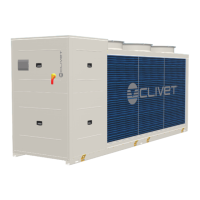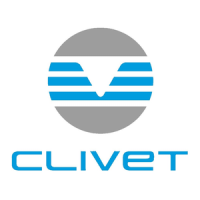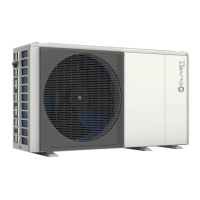35
R32 gas safety warnings
that, while intervening on electrical components, the
housing is not altered in a way so as to aect the
level of protection. This includes damage to cables,
an excessive number of connections, terminals not
compliance with the original specifications, damage to
gaskets, an unsuitable installation of gaskets, etc.
• Make sure the device is installed safely.
• Check that the seals or sealing materials are not
altered in such a way that they no longer the impede
the entry of flammable environments. Spare parts must
comply with manufacturer specifications.
Warning
⊲ Using silicone sealants may inhibit the eectiveness
of a few types of leak detection equipment. It is not
necessary to isolate intrinsically safe components
before performing operations on them.
10.11 Reparation of intrinsically safe components
Do not apply permanent inductive or capacitive loads to
the circuit without making sure that they do not exceed
the admissible voltage and current allowed for equipment
in use.
Intrinsically safe components are the only component
type on which operations can be performed in a
flammable atmosphere. The testing device must show a
correct value. Replace components only with the parts
specified by the manufacturer.
Following a leak, other parts could lead to the combustion
of the refrigerant in the atmosphere.
10.12 Wires
Make sure wires are not subjected to wear, corrosion,
excessive pressure or vibration, that there are no sharp
edges and that they do not produce other negative
eects on the environment. The inspection must
also keep into consideration the eects of tine or the
continuous vibration caused e.g. by compressors or fans.
Detection of flammable refrigerants
Under no circumstance is it possible to use potential
ignition sources to search or detect refrigerant leaks.
Do not use halide lights (or any other open flame
detectors).
10.13 Leak detection methods
The following leak detection methods are considered
acceptable for systems containing flammable refrigerants.
Electric leak detectors must always be used to identify
flammable refrigerants, although they do not present a
suitable sensitivity level or require recalibration (detection
equipment must be calibrated in an area free from
refrigerants).
Check that the detector is not a possible source of
ignition and that it is suitable for the refrigerant. Leak
detection equipment must always be set to an LFL
percentage and calibrated depending on the refrigerant
used, so the correct gas percentage (25% max) must be
verified.
Leak detection fluids are suitable for most refrigerants,
although using detergents containing chlorine should be
avoided as this substance may react with the refrigerant
and corrode copper pipes.
If a leak is suspected, all open flames must be removed
or switched o.
If a leak is identified that requires brazing, all the
refrigerant must be recovered from the system or isolated
(using interception valves) in a section of the system far
away from the leak. Oxygen-Free-Nitrogen (OFN) is then
purged through the system both before and during the
brazing procedure.
10.14 Removal and evacuation
When intervening on the cooling circuit to perform repair
work or any other type of work, always follow the normal
procedure. However, considering the risk of flammability,
we recommend following the best practices. Comply with
the following procedure:
• remove the refrigerant;
• purge the circuit with inert gas;
• evacuate;
• Purge again with inert gas;
• Interrupt the circuit with interruption or brazing.
The refrigerant charge must be collected in suitable
recovery tanks. To make the unit safe, flushing with
Oxygen-free-Nitrogen must be performed. This
procedure may have to be repeated multiple times. Do
not use compressed air or oxygen for this operation.
Flushing is obtained interrupting the system vacuum with
OFN and filling until the operating pressure is obtained,
then releasing into the atmosphere and restoring the
vacuum. This process must be repeated until there is no
trace of refrigerant in the system.
When using the final OFN charge, the system must
be vented to the atmospheric pressure to allow the
intervention. This step is essential to perform brazing
operations on the pipes.
Make sure that the vacuum pump intake is not near
ignition sources and that there issuitable ventilation.
10.15 Charging operations
In addition to conventional charging operations, the
following requirements must be complied with:
• When using charging equipment, make sure that the
various refrigerants are not contaminated. Flexible
tubes or conduits must be as short as possible to
reduce to the minimum the quantity of refrigerant
contained.
• Tanks must be kept in a vertical position.
• Before loading the system with refrigerant, check that
the cooling system is earthed.
• Label the system when fully charged (unless already
labelled).
• Make sure not to fill the cooling system excessively.
• Before recharging the system, the pressure must be
tested with OFN. A leak test must be performed after
the charging operations but before commissioning.
Before leaving the site, perform an additional leak test.

